PMC/PubMed Indexed Articles
Indexed In
- Open J Gate
- Genamics JournalSeek
- JournalTOCs
- RefSeek
- Hamdard University
- EBSCO A-Z
- OCLC- WorldCat
- Publons
- Geneva Foundation for Medical Education and Research
- Google Scholar
Useful Links
Share This Page
Journal Flyer

Open Access Journals
- Agri and Aquaculture
- Biochemistry
- Bioinformatics & Systems Biology
- Business & Management
- Chemistry
- Clinical Sciences
- Engineering
- Food & Nutrition
- General Science
- Genetics & Molecular Biology
- Immunology & Microbiology
- Medical Sciences
- Neuroscience & Psychology
- Nursing & Health Care
- Pharmaceutical Sciences
Review Article - (2020) Volume 11, Issue 6
An Overview on Mycotoxins Causing Cancer in Human
Mohammad Salim1*, Mohammad Shahid Masroor2 and Shagufta Parween32Peoples College Of Dental Sciences and Research Centre, Bhopal, India
3All India Institute of Medical Sciences (AIIMS), Bhopal, India
Received: 23-Oct-2020 Published: 13-Nov-2020, DOI: 10.35248/2155-9627.20.11.364
Abstract
Mycotoxins are naturally occurring toxic substances produced by the mould fungi grown on a variety of foodstuffs. Exposure to these toxic substances causes various ailments, diseases and cancer in human. And, it all happens via either by ingesting these mycotoxins containing foodstuffs directly or indirectly by the foods of animal origin. These mycotoxins poisoning in humans are usually resulted in fatal consequences like multiple organs failure especially the liver and kidney failures or if survived the patients might be suffering from cancer in future. Further, it has already been proved that most of these mycotoxins when ingested cause mutations in cellular genome developing cancers in human. The present review is an attempt to fill the research gaps discussing the new roles of mycotoxins causing cancer with the types of new cancers produced by them on the basis of researches done so far in the field of fungal origin of cancer.
Keywords
Mycotoxins; Diseases; Cancer; Human
Introduction
For the past several years, we are familiar with the bacterial and viral origin of cancers, so it may not be so farfetched to stretch causation to fungal overgrowth. It appears that the number of patients with fungal overgrowths has risen dramatically with compromised immune responses in the last half century. Dr. Johannes Fibiger, a 1926 Nobel laureate in physiology and medicine of Denmark in 1913 has already proved the fungal connection with the development of cancer in human by feeding rats with parasitic larval-carrying cockroaches infected by fungi. These rats developed cancer. Fungi have thus been found to cause a variety of cancers in human [1-3].
Fungi can cause a number of life-threatening diseases. Mycotoxins related diseases are one of them. In the decade following 1970, people came to know clearly that mycotoxins have been responsible for the cause of various ailments and diseases in human and animals]. Some of them may be quite harmful and even fatal. Mycotoxins are the toxic substances released by fungi especially saprophytic filamentous moulds such as Aspergillus, Penicillium, Fusarium and Stachybotrys, growing easily on cereals, foodstuffs and animal feeds. They are generally formed while crops are growing or in post-harvest storage conditions where contaminations are even impossible to eliminate completely. According to one estimate, nearly one fourth of the world’s cereal crops are infected with mold fungi comprising of more than 300 types of mycotoxins they produce. Some molds are capable of producing more than one mycotoxins and some mycotoxins are produced by more than one mold species [4,5].
Further, mycotoxicosis is the diseases caused by these mycotoxins for which the medical professionals are not very much acquainted and the patients are being treated as the case of simple poisoning. Both human and animals are suffering from mycotoxins but, since ruminants have rather more capabilities of degrading these mycotoxins they are less affected. Similarly, their effects could be to some extent compensated with the use of vitamins and antioxidants. The present review discusses the fungi producing mycotoxins causing cancer in human in the light of recent researches done so far in the field of microbial origin of cancer. The authors have gone through several original research papers in order to explore the facts regarding the human cancers caused by the mycotoxins produced by the certain fungi in nature [6,7].
Discussion
Mycotoxins are the most powerful carcinogens known to science. They are low molecular weight substances (250 to 500 daltons), oily, odorless, non-volatile and insoluble in water in their properties.
These mycotoxins cannot be classified according to their mode of actions, toxicology and metabolism. They are very different according to their mode of actions due to different chemical structures they possessed. Some of the cytotoxic, genotoxic, mutagenic and carcinogenic mycotoxins have been tabulated in Table 1 and discussed as under:
| S. N. | Carcinogenic Mycotoxins | Causal Organisms | Source of Infections |
|---|---|---|---|
| 1 | Aflatoxins | Aspergillus flavus, A. parasiticus | Groundnuts, Rice |
| 2 | Sterigmatocystin | Aspergillus versicolor, A. nidulans | Moldy stored grains, green coffee, beans and cheese, Bread, curdham and salami, indoor air, damp buildings, carpet dust, textiles, wall boards, insulators, ceiling tiles and manufactured wood |
| 3 | Oxalic acid | Aspergillus niger, Penicillum Spp. | Moldy grains, food materials and other plant products |
| 4 | Ochratoxin | Aspergillus ochraceus, Penicillum verrocusum | Cereals, beans and other plant products and transferred in humans as a meat |
| 5 | Fumonisins | Fusarium verticilloides (F.moniliforme),F. proliferatum | Moldy whole grains of Maize |
| 6 | Trichothecenes | Stachybotyris charatum, Fusarium sporotrichioides, | Moldy whole grains of wheat, barley and oats, Moist Damp buildings, wall papers, under carpet, ceiling tiles, drip under the sink |
| 7 | Zearalenone | Fusarium graminearumand F. culmorum | Infected cereal crops |
| 8 | Alternariol & Alternariol monomethyl | Alternaria alternata and A. solani | Wheat and Potato |
| ether | |||
| 9 | Cyclosporin | Tolypocladium inflatum | |
| 10 | Patulin | Aspergillus, Penicillium expansum and P. griseofulvum | Decaying fruits especially apple and pear and their derivative products |
| 11 | Citrinin | Penicillium Spp. | Stored grains and decaying fruits and other plant products |
| 12 | Rubratoxin | Penicillium rubrum and P. purpurogenum |
Moldy cereal grains |
Table 1: A List of Carcinogenic Mycotoxins with their Causal Organisms and Source of Infections
All these mycotoxins except the fumonisins are genotoxic producing the effects like chromosomal aberrations, abnormal sister chromatids exchange and mismatched and displaced DNA synthesis. Fumonisins are believed to act by disrupting the signal transduction pathways of the target cells. These mycotoxins have been found to be associated with certain cancers development in human and animals. They destroy virtually every organs and systems of the human body. Mycotoxins can cause immune suppression, toxic aleukia, leukemia, impaired ribosomal functions, lymphoma, astrocytomas, mesiothelioma, bronchial, uterine and renal cell carcinoma, demyelination, seizures, headache, muscular and neural disorders. They inhibit protein, RNA and DNA synthesis. Some of these mycotoxins are described as under:
Aflatoxins (AF)
When in 1960, nearly 1 lakh turkey birds died due to the consumption of contaminated ground nuts, alarmed us aflatoxins for the first time. They were fed with the seeds infected with fungi named as Aspergillus flavus and A. parasiticus. Aflatoxins have been divided into six major groups according to their chromatographic mobility and fluorescent properties shown under UV light. These are as aflatoxin B1 (AFB1), aflatoxin B2 (AFB2), aflatoxin G1 (AFG1), aflatoxin G2 (AFG2), aflatoxin M1 (AFM1) and aflatoxin M2 (AFM2) (Figure 1) [8,9].
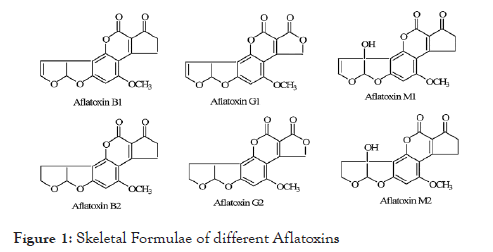
Figure 1: Skeletal Formulae of different Aflatoxins
AFB1 and AFB2 appear blue under UV light while AFG1 and AFG2 a green one. While aflatoxins B1 and B2 are released by both the fungi Aspergillus flavus and A. parasiticus, aflatoxins G1 and G2 are formed only by the A. parasiticus. Aflatoxins M1 and M2 are formed in milk when aflatoxins B1 and G1 are injected in animal feed. Aflatoxin B1 is always associated with B2. The molds producing aflatoxins infect cereals mostly rice and nuts. These molds are either inhaled or ingested by oral routes in body. And, after ingestion these are absorbed in intestinal tract of which the duodenum appears to be the major site of absorption. It reaches into blood via passive diffusion without any extra efforts [8,10-12].
Among other mycotoxins, aflatoxins have been studied most. Aflatoxin B1 is one of the most potent mycotoxins reported so far and have been regarded as the class 1 carcinogen causing hepatocellular carcinoma in human and animals. Aflatoxins are acutely toxic, immunosuppressive, mutagenic, teratogenic and tumor inducing carcinogenic compounds. It mainly causes liver cirrhosis. Rats with high protein diet after ingestion of aflatoxin reflects higher rate of liver cancer. Similarly, there are reports that aflatoxins caused breast cancer and produces tumors in breast. Moldy cheese containing aflatoxin produces breast cancer. In a very simple experiment in which moldy rice alcoholic extract was fed produces breast cancer in animals. Though, without any specifications, this simple experiment shows a link between mycotoxins and breast cancer in human. AFB1 is oxidized into several toxic, mutagenic and carcinogenic chemicals. It causes point mutations and DNA strand breaks. The excretion of these aflatoxins is made mainly by the urine, liquid bile and in lactating mothers through milk [12-14].
The human P53 gene plays an important role in protecting us against cancer. But, sometimes, when this P53 gene got mutated, it is unable to stop cancer. Mycotoxin like aflatoxin has been found to be associated with DNA damage and is capable of inactivating the P53 gene. Aflatoxin B1 causes mutation to P53 gene. It inhibits the breakdown of glucose and glycogen. Changes in this particular gene allow the cell to proliferate out of control causing cancer [15,16].
Sterigmatocystin (ST)
Sterigmatocystin is obtained from Aspergillus versicolor and A. nidulans. It has been reported from moldy stored grains, green coffee beans and cheese. Relatively high levels of sterigmatocystin have been formed in bread cured, ham and salami. The most likely exposure is through eating moldy cheese crusts. This is also commonly reported in indoor air and its presence in damp buildings has been linked to complaints of moldy odour with eyes, nose and throat irritations. This is found in water damaged building materials like textiles, wall boards, insulations, ceiling tiles and manufactured wood. It occasionally occurs in carpet dust from indoor environment (Figure 2) [17,18].
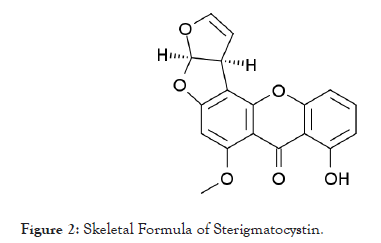
Figure 2: Skeletal Formula of Sterigmatocystin.
Sterigmatocystin is a precursor of aflatoxin and much less frequently occurs than aflatoxin. This is a potent carcinogenic, teratogenic and mutagenic mycotoxin. It has the potential to develop hepatocellular carcinoma and its occurrence in foods should not be taken lightly. Though, most of the toxin is removed at the rice milling stage, It causes acute hepatitis, Rey’s syndrome, hemorrhages and bile duct proliferations. It also develops lung and kidney cancers. Further, like other members of its species A. versicolor is an opportunistic pathogen and is considered to be an important causative agent of Aspergillosis. Being structurally similar to aflatoxins, it develops tumor in several organs but its toxicity is weaker than aflatoxins. The levels as low as 15 mg/day fed continuously or a single subcutaneous injection of sterigmatocystin causes DNA damage and apoptosis in human peripheral lymphocytes [19-21].
Oxalic acid
Oxalic acid happens to be a mycotoxin is produced by a number of fungal species belonging to Aspergillus and Penicillium (Figure 3)]. Aspergillus niger in lungs develops human pulmonary aspergillosis, which in turn a huge amount of oxalic acids are produced by the fungus which is extremely toxic to blood vessels. The fatal hemorrhage may occur due to the constriction of vessels. Oxalic acid crystals, the so called weddellite crystals cause calcification of breast tissues via the formation of calcium oxalates. And, if these crystals are accumulated in huge amount in breast and lungs cause cancer in human. Oxalic acid in the sputum or lung specimens of patients is an indication of A. niger infection. Since, humans do not produce oxalic acid themselves, this is an appropriate conclusion of breast cancer [22-25].
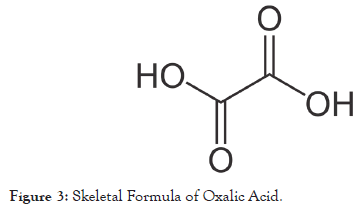
Figure 3: Skeletal Formula of Oxalic Acid.
Ochratoxin (OTA: The hormone disrupting mycotoxin)
Ochratoxin is released from Aspergillus ochraceus and Penicillium verrucosum and has been very rare to occur in Asia. This is generally found in cereals, beans and other plant products. A very little known source of food borne mycotoxins is coffee. OTA is a crop storage nephrotoxic mycotoxin causing immunity failure. It affects the kidney function and nervous system. It can lead to DNA damage and cancer including breast cancer in humans. Since, fibroadenomas type of breast cancer has long been documented in human; it might be linked as the development of same cancer with appropriate dosing of ochratoxin in mice and rats. International Agency for Research on Cancer (IARC) has classified the ochratoxins as possible carcinogen for human cancer. There are four types of ochratoxins namely ochratoxin A (OTA), ochratoxin B (OTB), Ochratoxin C (OTC) and Ochratoxin D (OTD). Out of these the major one and the powerful ochratoxin is ochratoxin A (OTA) (Figure 4) [26,27].
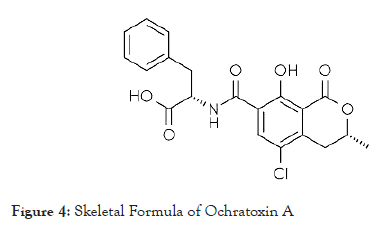
Figure 4: Skeletal Formula of Ochratoxin A
Ochratoxins are absorbed by the gastrointestinal tract especially from Jejunum. As soon as the ochratoxin reaches the blood it rapidly binds with the serum albumin. It circulates in different parts of the body as a serum-protein adduct. This adduct could be used as a biomarker for ochratoxin exposure. Ochratoxins are nephrotoxic mycotoxin causing fatal kidney diseases characterized by the decrease in kidney size with or without tubular degenerations. It has been found to be responsible for porcine nephropathy, a disease which is widely studied. Ochratoxins are mainly accumulated in kidneys followed by the liver, muscle and body fat and is being transferred in humans as a meat. Ochratoxin toxicity also results in the release of blood in urine and faeces, increased water consumption, bladder dysfunction and diarrhea [26, 27].
Ochratoxins disrupt the level of hormones in human and animals. In New Jersey, an experiment was conducted in 2011 to screen out the urine samples of Jersey girls aged 9 to 10 years old. The girls found positive were tended to be shorter and less likely to have reached the onset of puberty. Practically, it has also been proved that female piglets shows estrogenic property, if fed with contaiminated OTA grains [28].
Chemically, ochratoxin has an isocoumarin moiety link with a peptide bond to phenylalanine. Metabolically, ochratoxin not only inhibits the synthesis of phenylalanine but also inhibits the conversion of other substances from phenylalanine. And, this is due to the inhibition of the synthesis of enzymes required for the process. For example, it inhibits the synthesis of the formation of phenylalanine-tRNA complex and the conversion of phenylalanine into tyrosine. Also, it inhibits the formation of ATP and enhances the membrane lipid peroxidation superoxide and hydrogen peroxide radical formation.
Fumonisins
Fusarium releases more than a dozen known mycotoxins such as fumonisins, trichothecenes and zearalenone. Fumonisins are produced by the Fusarium verticilloides and F. proliferatum. They were first isolated in 1988 from F. verticilloides in South Africa. They are mainly found in maize. They are highly polar compounds and soluble in water. International Agency for Research on Cancer (IARC) has categorized fumonisins as possible human carcinogens. It has been reported to cause oesophageal cancer in humans in South Africa, China and Italy. In animals, horses are more sensitive to fumonisins toxicity causing Equine Leukoencephalomalacia (ELEM) affecting central nervous system. In general, the most affected organs are pancreas, liver and kidneys with increased weight and necrosis. Fuminosins B1, B2, and B3 are a group of nongenotoxic carcinogens. The consumption of fumonisins contaminated grains has been correlated with oesophageal cancer in humans. Fumonisin B1 produces liver and kidney dysfunction, oesophageal cancer, brain and spinal cord defects. Funonicin B2 is also similar in effects as B1 but their effects are mild (Figure 5) [29, 34].
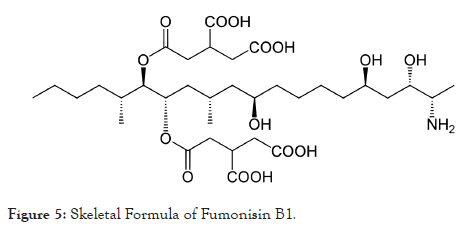
Figure 5: Skeletal Formula of Fumonisin B1.
They are the inhibitors of a key enzyme, named N-acyltransferase in the sphingolipids metabolism causing rapid increase of sphinganine and decrease of complex sphingolipids. Accumulation of sphinganine causes hepatic as well as nephrotic toxicity due to free sphingoid bases resulting into abnormal cell proliferations and apoptosis. Since the Sphingolipids are important for the normal membrane functioning it causes neurotoxicity and pulmonary edema in patients. The accumulation of free sphingoid bases in serum might be the good bioindicator of fumonisins exposure. They are poorly absorbed by the gastrointestinal tract and rapidly cleared from blood. Similarly, they are neither stored in a good quantity in tissues nor have been reported from eggs so far. The carryover quantity in milk has also been very minimal [29-34]
Trichothecenes
Trichothecenes are produced by the fungi Stachybotrys and Fusarium. These are most preferred weapons for biological warfare. In 1950, trichothecenes killed nearly 1 lakh people in Russia causing alimentary toxic aleukia (ATA). ATA is caused by the T-2. These are powerful inhibitiors of protein synthesis and acts like potent inhibitors of RNA and DNA synthesis. They cause protein synthesis inhibition via binding to the 18s rRNA of underlying induction of cell apoptosis (Figure 6) [35-37].
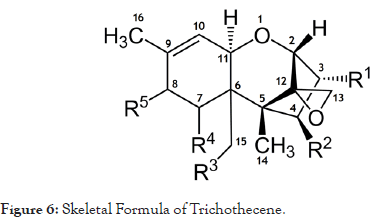
Figure 6: Skeletal Formula of Trichothecene.
Today, nearly 175 trichothecenes have been isolated but only a few of them contaminate foods like wheat and rice. They are categorized into two main groups as type A and type B produced by several species of Fusarium. Some of the type A trichothiecenes are T-2 toxin, HT-2 toxin and Di Acetoxy Scirpenol (DAS) and the type B toxins are De-Oxy Nivalenol (DON: also known as vomitoxin), Nivalenol (NIV) and fusarenon X. In experimental animals, it has been proved that these trichothecenes are X40 times more toxic when inhaled rather than when ingested orally. However, they are accumulated in tissues or eggs and have not been found in milk fortunately. And, the toxicity symptoms are usually nausea, vomiting and anorexia. These are cytotoxic to eukaryotic cells causing cell lysis, inhibition of mitosis and high division rate. It also distrupts the normal apoptosis and immune system with reduced leukocyte count. Marasas & his coworkers have reported that trichothecenes are responsible for the development of oesophageal cancer in the republic of Transkei, South Africa. However, there are no records of ATA in Asia [38].
One of the trichothecenes, T-2 is produced naturally by the fungus Fusarium i.e., F. sporotrichioides, F. langsethiae, F. acuminatum and F. poae. These fungi are found in poor quality moldy whole grains of wheat, barley and oats. T-2 toxin has a very short half- life. It was used as a chemical weapon agent as “yellow rain”. The antibodies of T-2 toxin are frequently found in human blood of infected person. This is able to inhibit DNA and RNA synthesis and can induce apoptosis. However, in vivo the compound rapidly metabolizes into HT-2 mycotoxin. It mainly causes ATA whose symptoms are high fever with skin, nose, throat and gum bleeding, necrosis and immunity failure. These symptoms may sometimes mimic to radiation poisoning. In an experimental animal model breast cancer were also developed with appropriate dosing of T-2 mycotoxin [39].
The other fungi responsible for the release of a trichothecene are a black mold named as Stachybotrys chartarum. This is found naturally on the walls of several old buildings. This fungus grows well in conditions that are damp, moist, dark and hidden. Some of the favourite places in homes for this black mold to grow are within walls, behind the wall papers, under carpet or inside the ceiling tiles and a drip under the sink. Inhalation of this fungus may cause joint pain, extreme fatigue, lethargy and brain fog and some neurological diseases like depression and Alzheimer’s disease. Further, Stachybotryotoxicosis had killed tens of thousands of horses and cattle in the USSR in 1930s) [40].
Another trichothecene named nivalenon is released by the fungus Fusarium cerealis. This is found in wheat, maize, oat, barley and rye. It induces the bone marrow toxicity. It slightly increased the frequency of chromosomal aberrations and sister chromatids exchange with DNA damage and DNA strand breaks in vitro and induces apoptosis in HL 60 cells. It also inhibits blastogenesis in cultured human lymphocytes. This is excreted in faeces. Similarly, a trichothecene, named verrucarin is also obtained from Fusarium species and Myrothecium verrucaria. It produces breast cancer in mice. The verrucarin A, a protein synthesis inhibitor induces growth inhibition and apoptosis in breast cancer cell lines MDA- MB-231 and T47D. It alters the cell cycle regulatory proteins and induces apoptosis through reactive oxygen species-dependent P38 MAPK in the human breast cancer cell line MCF-7 [41-45].
Zearalenone (ZEA: The hormone disrupting mycotoxin)
Zearalenone is found in warm and temperate regions. This is released by the Fusarium graminearum, F. cerealis, F. equiseti, F. incarnatum and F. culmorum on a variety of cereal crops (Figure 7). An herbicide used by the farmers named “Round up” containing glyphoset enhances the growth of Fusarium fungus in the field). It causes DNA damage thus categorized as potential carcinogen. It activates the protein biosynthesis abnormally. Zearalenone produces mycoestrogens showing hyperestrogenicity. The estrogenic effects are due to the similarities between zearalenone and estradiol. Estradiol is a female sex hormone in the group of estrogens (Figure 8) [46,47].
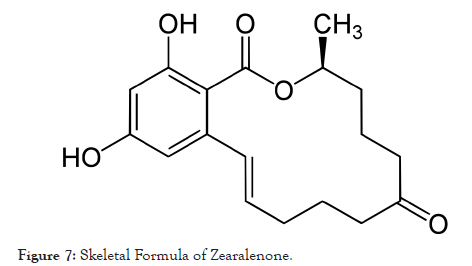
Figure 7: Skeletal Formula of Zearalenone.
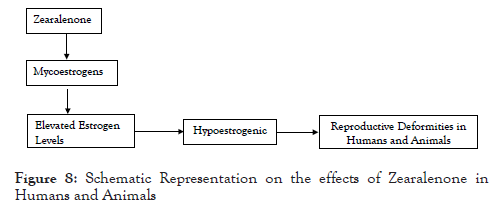
Figure 8: Schematic Representation on the effects of Zearalenone in Humans and Animals
In New Jersey, USA the young girls aged 9 to 10 years were examined for urinary mycoestrogens. Eighty five percent of the girls had mycoestrogens in their urine which was caused by popcorn and beef intake. The girls with ZEA were reported to be shorter with less likely to have reached the onset of breast development. A derivative of ZEA named “Zeranol” had been given to U.S. livestock since the 1970s. It was immediately banned in the European Union and many other countries [28].
Zearalenone is a well-known mycotoxin causing reproductive deformities in humans and animals as under:
• Fat gain
• Imbalances in sex hormones
• Gender deformities like feminism
• Reduced libido
• Infertility
• Impaired semen quality
• Hair and semen loss
• Embryonic death
• Abortion
• Delayed onset of puberty
• Swollen vulva
• Swollen prepuce
• Uterine tumor development
In addition, some teratogenic effects of ZEA are as splaylegs, ovarian and uterine hypertrophy and testicular atrophy.
Alternariol (AOH) and Alternariol Monomethyl Ether (AME)
AOH and AME mycotoxins were isolated from Alternaria alternata and A. solani. They have been found in wheat from Europe, Argentina, China and Australia. A. alternata has been reported to be the most common fungus of Canadian Western wheat. They have also been reported in some other grains, sunflower seeds, oilseed rape meal, flax and linseeds, fruits, processed food products, apple juice and tomato products. Alternariol has been reported to inhibit cholinesterase enzymes and is a mucoestrogen. Similarly, AME is also distributed all over the world and shows no acute toxic effects to the health of humans and animals but it possess the properties of mutagenicity and carcinogenicity causing particularly very high incidences of oesophageal cancer. It also induces DNA breaks. Moreover, AME was characterized as powerful inhibitor of topoisomerase I and II contributing to its genotoxicity (Figure 9) [48-50].
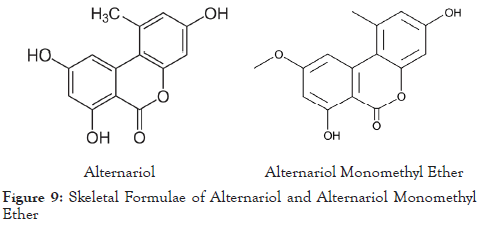
Figure 9: Skeletal Formulae of Alternariol and Alternariol Monomethyl Ether
Cyclosporin
Several mycotoxins which are being usedup as antibiotics may increase the risk of cancer in future. These antibiotics may cause breast cancer prostate cancer, liver cancer, and colorectal cancer (Figure 10).
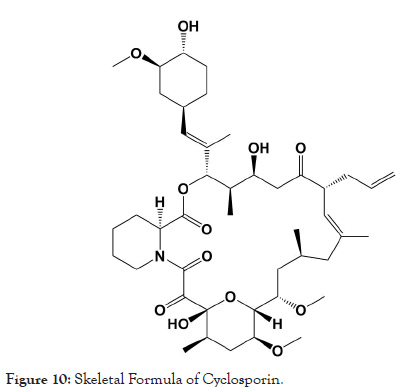
Figure 10: Skeletal Formula of Cyclosporin
Cyclosporin is a steroid-sparing agent and antibiotic classified as mycotoxin isolated from the fungus Tolypocladium inflatum. Immunocompressed with cyclosporin therapy may increase the risk of developing cancer especially lymphoma. It may cause cutaneous T-cell lymphoma and the development of B-cell lymphoma in a patient with psoriasis treated with cyclosporin. It develops malignant tumors in breast, kidneys and malignancies in patients treated for rheumatoid arthritis and psoriasis. It also causes tonsillar carcinoma laryngeal carcinoma and ovarian cancer in patients, if immunocompromised with cyclosporine [51-81].
Patulin (PAT)
Patulin is produced by a variety of molds, particularly Aspergillus, Penicillium expansum and P. griseofulvum. This is frequently found in moldy fruits especially decaying stored apples and their derivative products. Patulin, a mycotoxin (4-hydroxy-4H-furo [3,2c] pyran, 2[6+1]-one) had been reported as mutagenic and genotoxic chemical with ability to induce oxidative DNA damage to cause cancer in human and animals. Patulin appears as a yellow spot under visible light for reflection and transperancy at the same time and yellow-orange fluorescent spot under long wavelength UV light (Figure 11).
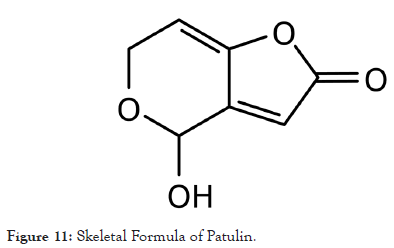
Figure 11: Skeletal Formula of Patulin.
Patulin produces fibroadenomas in human breast which has long been documented as a cancer. It also induces colorectal cancer. Skin contact with decaying fruits is likely to be the chief route of exposure for PAT-causing skin cancer. Disruption of apoptosis by inhibitory phosphorylation of BAD might contribute to PAT-induced skin carcinogenesis. Patulin is mainly found in low quality apples and pears and the products prepared from these fruits. Patulin also causes neurotoxic, immunotoxic and gastrointestinal effects in human and animals. Patulin can even survive pasteurization. Since, most of the juice producers have been using rotten apples and pears, not fit for human consumption; this is loaded with patulin known to cause birth defects and cancer. Similarly, the juice lovers are also ingesting unknowingly strong disinfectants as rotten fruits are washed immediately during the process just to stop the further deterioration [82-89] .
Citrinin (CIT)
Citrinin is often found in stored grains, fruits and other plant products. It has got nephrotoxic, hepatotoxic, cytotoxic as well as genotoxic effects. Oxidative DNA damage is caused by the citrinin. Citrinin is produced by the Penicillium expansum in apple and grape juices. Citrininotoxinogenecity in mammalian tissues of Penicillium species isolated from decaying apples has shown by Pepeljnjak and his coworkers in 2002. Chronic administration of citrinin develops small adenomas in liver and kidneys in rats. Similarly, in vivo it induces chromosomal abnormalities and hypodiploidy in the bone marrow of mice showing its carcinogenicity. Urine can be used as a biomarker of citrinin exposure and kidney has been the main target of citrinin exposure (Figure 12) [89, 90-94].
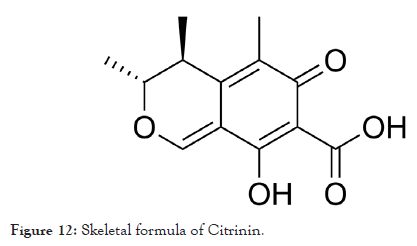
Figure 12: Skeletal formula of Citrinin.
Rubratoxin
Rubratoxin is produced by Penicillium rubrum and P. purpurogenum which is most commonly found in cereal grains. The toxin is known to cause liver cancer. There are two types of rubratoxin, namely A and B. Rubratoxin B is a potent hepatotoxic and teratogenic mycotoxin which induces internucleosomal and nuclear fragmentation. This is a consequence of apoptosis in P53 nul cells (Figure 13) [95].
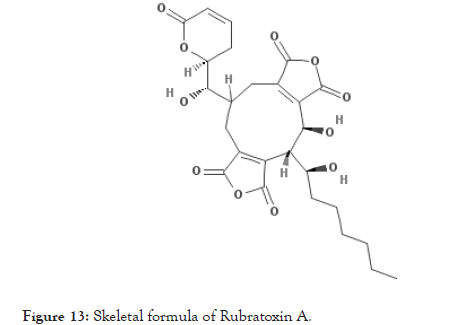
Figure 13: Skeletal formula of Rubratoxin A.
Conclusion
In recent past, it appears that there has been an increasing trend in researching the carcinogenicity of mycotoxins in humans and animals. And, this is all due to the natural food stuffs infected with fungi are deliberately being consumed by the society without knowing their ill effects and the diseases caused by them in future. The mycotoxins are naturally produced secondary metabolites which are mainly consumed by the oral routes and usually absorbed by the gastrointestinal tract in the human body. Though, these mycotoxins virtually destroyed every organs of the body; liver, kidney and the human female breast are mostly affected developing cancer in future. They are either genotoxic, mutagenic, teratogenic or carcinogenic causing chromosomal aberrations, mismatched and displaced DNA synthesis and abnormal protein biosynthesis.
In a nutshell, some of them are described as aflatoxins are potent class 1 carcinogen causing hepatocellular carcinoma in human. Similarly, Sterigmatocystin also developed liver cancer. The breast cancer is caused by the oxalic acid, ochratoxin, trichothecenes, Zearalenone, cyclosporin and patulin. In addition, while esophageal cancer is caused by the fumonisins, alternariol and alternariol monomethyl ether, the antibiotic cyclosporin produces laryngeal cancer. Further, cyclosporin also causes prostate, tonsillar, ovarian and colorectal cancer. The colorectal cancer is also caused by the patulin.
Most specifically, the trichothecenes are causing Alimentary Toxic Aleukia (ATA). This is a powerful inhibitor of DNA, RNA and protein synthesis. Trichothecenes and citrinin cause bone marrow cnacer in human. Last but not the least, ochratoxin and zearalenone are nephrotoxic mycotoxins developing impairment in the levels of hormones causing reproductive deformities in humans and animals. Finally, fungi have thus been found to cause a variety of cancers in human. The present paper deals with the study of those fungi producing mycotoxins causing cancers in human in the light of recent researches done so far in the field of microbial origin of cancer.
REFERENCES
- David LM, Jonathan PR, Julian RN. Candida albicans- epithelial interactions and pathogenicity mechanisms: scratching the surface. Virulence. 2015; 6 (4): 338-346.
- Fibiger J. Professor creates cancer Dr. Fibiger of Copenhagen develops it by feeding cockroaches to rats. The New Work Times. 1913.
- Fibiger J. On Spiroptera carcinomata and their relation to true malignant tumors; with some remarks on cancer age. J cancer Rese. 1919; 4(4): 367-387.
- Mohamed EZ. Impact of mycotoxins on humans and animals. J Saudi Chem Society. 2011; 15: 129-144.
- Etzel R. Mycotoxins. JAMA. 2002; 287 (4): 23-30.
- Fung F, Clark RF. Health effects of mycotoxins: a toxicological overview. J Cl Toxicology. 2003; 42(2): 217-234.
- Soni KB. Protective effects of food additives on aflatoxin- induced mutagenicity and hepatocarcinogenicity. Cancer Lett. 1997; 115(2): 129-133.
- Sargent K, Carnahan RBA, Allcroft R. Toxic products in groundnuts- chemistry and origin. Chemy Ind. 2006; 1963: 55-61.
- William J, Zartman RE, Hudnall WH. Aflatoxin Bladsorption by clays from water and corn meal. Appl Clay Sci. 2007; 36: 197-205.
- Klich MA, Pitt JI. Differentiation of Aspergillus flavus from A. parasiticus and other closely related species. Trans Br Mycol Soc. 1998; 91: 99-108.
- Iqbal SZ. Assessment of aflatoxins, ochratoxin A and Zearalenone in breakfast cereals. J food Chem. 2014; 157: 257-262.
- Patricia Z, Arianne CB, Benedito C. Mycobiota, aflatoxins and cyclopiazonic acid in stored peanut cultivars Food Research international. UJMR. 2013; 52: 380-386.
- Campbell TC. In Environment Aspects of Cancer: the role of macro and micro components of foods. 1983; 187-197.
- Yiannikouris A, Jouany JP. Les mycotoxins dans les aliment des denvenir et leurs effets chez I animal. INRA prod Anim. 2002; 15: 3-16.
- Alvarez CS, Jeremy O, Michael D. Analysis of TP53 aflatoxin signature mutation in hepatocellular carcinomas from Guatemala: A cross sectional study. Health Sci Rep. 2020; 3(2): e155.
- Noreddine B. Chronic and acute toxicities of aflatoxins: mechanism of action. Int Environ Res Public Health. 2020; 17: 423-450.
- Steffen E, Annette L, Martin E. Occurrence of Toxigenic Aspergillus versicolor isolates and Sterigmatocystin in carpet dust from damp indoor environments. App Environ Microbiol. 2002; 68(8): 3886-3890.
- Terenzio B, Marco R, Amedeo P. Sterigmatocystin occurrence in paddy and processed rice produced in Italy in the years 2014-2015 and distribution in milled rice fractions. Toxins. 2017; 9: 86-96.
- Zhang D, Yu C, Zhang X. Sterigmatocystin- induced DNA damage. Plos ONE. 2013; 8(5): e65044.
- Purchase IF, Vander Watt JJ. Carcinogenicity of Sterigmatocystin to rat skin. Toxicol Appl Pharmacol. 1973; 26: 274-281.
- Fujii K, Kurata H, Shigeyoshi O, Hatsuda Y. Tumor induction by a single subcutaneous injection of sterigmatocystin in newborn mice. Cancer Res. 1976; 36: 1615-1618.
- Cameselle C, Bohlamnn JT, Nunez MJ, Lema JM. Oxalic acid production by Aspergillus niger. Bioprocess Eng. 1998; 19:247-252.
- James N C, Charles T. An oxalic acid producing Penicillium. J Biol Chem. 1915; 22: 287-293.
- Wang JS, Groopman JD. Cancer and Mold Toxins: Another way indoor mold harms humans: DNA damage by mycotoxins. Mutat. Res.1991; 424 (12) : 197-181.
- Yassin MA, ABD El-Rahim MA, Abdullah A, Al-Arfaj. Coffee bean mycocontaminants and oxalic acid producing Aspergillus niger. Ital J Food Sci. 2015; 27: 1-5.
- Pitt JI. Penicillium viridicatum, Penicillium verrucosum and production of ochratoxin A. Appl Environ Microbiol. 1987; 53: 266-269.
- Leszkowicz PA, Manderville RA. Ochratoxin A: an overview on toxicity and carcinogenicity in animals and humans. Mol Nutri Food Res. 2007; 51: 61-99.
- Elisa VB, Urmila C, Brain B, Yong L, Sastry I, Ian M, et al. Urinary mycoestrogens, body size and breast development in New Jersey girls. Sci Total Environ. 2011.
- Gelderblom WC, Jaskiewicz K, Kriek NP (1988). Fumonisins- novel mycotoxins with cancer – promoting activity produced byFusarium moniliforme. Appl Environ Microbiol. 54 (7): 1806-1811.
- Goel S, Schumacher J, Lenz SD, Kemppainen BW . Effects of Fusarium moniliforme isolates on tissues and serum sphingolipid concentrations in horses. Vet Hum Toxicol. 1996. 38(4) 265-270.
- Stockmann JH, Savolainen K . A review of the toxic effects and mechanisms of action of fumonicins B1. Human & Experimental Toxicology. 2008; 27(11): 799-809.
- Marasas WF, Kriek NP, Fincham JE, Rensburg SJ. Primary liver cancer and oesophageal basal cell hyperplasia in rats caused by Fusariummoniliforme. Int J cancer. 1984; 34 (3): 383-387.
- Merill AH, Sullards MC, Riley RT. Sphingolipid metabolism: Roles in signal transduction and disruption by fumonisins. Environ Health Perspectives. 2018; 109: 283-289.
- Riley RT, Enongen E, Merill AH. Sphingolipid perturbations as mechanisms for fumonicin carcinogenesis. Environ Health perspectives.2001; 109: 301-308.
- Joffe AZ. Toxicity of fungi on cereals overwintered in the field; on the etiology of alimentary toxic aleukia. Dissertation Inst Bot Acad Sci Leningrad. 1905.
- Li Y, Wang Z, Zhang S. T-2 toxin, a trichothecenes mycotoxin: review of toxicity, metabolism and analytical methods. J Agr Food Chem. 2001; 59 (8): 3441-3453.
- Yuan G, Wang Y, Peng S . T-2 toxin induces development toxicity and apoptosis in Zebrafush embryos. J Environ Sci. 2014; 26 (4): 917-925.
- Marasas WFO, van RSJ, Mirocha CJ. Incidence of Fusariumspecies and the mycotoxins, deoxynivalenol and zearalenone, in corn produced in esophageal cancer areas in Transkei Southern Africa. J Agric Food Chem. 1997; 27: 1108-1112.
- Dashek WV, Mayfeild JE, Llewellyn GC, O’Rear CE, Bata A. Trichothecenes and yellow rain: possible biological warfare agents. Bioassays. 1986; 4 (1): 27-30.
- Pestka JJ, Yike I, Dearbork DG, Harkema JR. stachybotrys chartarum, trichothecene mycotoxins and damp building- related illness: new insights into a public health enigma. Toxicol Sci. 2008;104 (1) : 4-26.
- Ryu JC, Ohtsubo K, Ueno Y. The acute and chronic toxicities of nivalenol in mice. Fundam Appl Toxicol. 1988; 11: 38-47.
- Tsuda S, Murakami M, Sasaki YF. Detection of nivalenol genotoxicity in cultured cells and multiple mouse organs by the alkaline single cell gel electrophoresis assay. Mutant Res. 1998; 415: 191-200.
- Thuvander A, Wikman C, Gadhasson. In vitro exposure of human lymphocytes to trichothcenes: individual variation and effects of combined exposure on lymphocyte function. Food Chem Toxicol. 1999; 37: 639-648.
- Palanivel K, Kanimozhi V, Kadalmani B, Mohammad AKA, Verrucarin A. a protein synthesis inhibitor, induces growth inhibition and apoptosis in breast cancer cell lines MDA- MB- 231 and T47D. Biotechnol Lett. 2013; 35: 1395-1403.
- Palanivel K, Kanimozhi V, Kadalmani B. Verrucarin A alters cell- cycle regulatory proteins and induces apoptosis through reactive oxygen species- dependent P38MAPK in the human breast cancer cell line MCF-7. Tumor Biol. 2014; 35(10): 10159-10167.
- Carlo B, Carla C, Barbara DS, Francesca D, Marzia de G, Elena P, et al. Effect of industrial processing on the distribution of aflatoxins and Zearalenone in corn- milling fractions. J Agric Food Chem. 2006; 54 (4): 5014-5019.
- Riley RT, Norred WP. Mechanistic toxicology of Mycotoxins In: The Mycota VI Human and Animal Relationships . Springer- Verlag (1996.
- Peter MS, Wendy Z, Sherry F, Benzamin PY. Alternaria toxins and Alternariol mono methyl ether in grain foods in Canada. Mycotoxin Res.2012; 28(4): 261-266.
- Liu GT, Qian YZ, Zhang P, Dong WH, Qi YM, Guo HT. Etiological role of Alternaria alternata in human esophageal cancer. Chin Med J. 1992; 105(5): 394-400.
- Yan M, Gang L, Ligang P. Development of an immunochromatographic strip test for the rapid detection of Alternariol Monomethyl Ether in fruit. Toxins. 2017; 9: 152-162.
- Knekt P, Adlercruetz H, Heliovaara M . Does antibacterial treatment for urinary tract- infection contribute to the risk of breast cancer. Br J cancer. 2010; 82(5): 1107-1110.
- Anderson LA, Gridley G, Engels EA. Antibiotic use and risk of non-Hodgkins lymphoma: a population-based case control study. Br. J. cancer. 98 : 161-164.
- Kilkkinen A, Rissanen H, Knekt P. Antibiotic use predicts an increased risk of cancer. Int J Cancer. 2008; 123 (9): 2152-2155.
- Velicer CM, Lampe JW, Heckbert SR, Potter JD, Taplin SH. Hypothesis : is antibiotic use associated with breast cancer? Cancer Causes Control. 2003; 14: 739-747.
- Velicer CM, Heckbert SR, Taplin SH. Antibiotics use in relation to the risk of breast cancer. JAMA. 2004; 291 (7): 827-835.
- Didham RC, Reith DM, McConnell DW, Harrison KS. Antibiotic exposure and breast cancer in New Zealand. Breast Cancer Res Treat. 2005; 92: 163-167.
- Garcia RLA, Gonzalez PA. Use of antibiotics and risk of breast cancer. Am J Epidemiol. 2005; 161: 616-619.
- Kaye JA, Jick H. Antibiotics and the risk of breast cancer? A meta-analysis. Pharmacoepidemiol Drug Saf. 2005; 19: 1101-1107.
- Sorensen HT, Skriver MV, Friis S, McLaughlin JK, Blot WJ, Baron JA. Use of antibiotics and risk of breast cancer: a population- based case- control study. Br J cancer. 2005; 92; 594-596.
- Friedman GD, Oestreicher N, Chan J, Quesenberry CP, Udaltsova N, Habel LA. Antibiotics and risk of breast cancer: up to 9 years of followup of 2.1 million Women. Cancer Epidemiol Biomarkers Prev. 2006; 15: 2002-2106.
- Sergentanis TN, Zagouri F, Zografos GC. Is antibiotic use a risk factor for breast cancer? A meta- analysis. Pharmacoepidemiol Drug Saf. 2010; 19: 1101-1107.
- Heidi S, Wirtz, Diana SM, Denise MB. Frequent antibiotic use and second breast cancer events. Cancer Epidemiol Biomarkers Prev. 2013; 22(9): 1588-1599.
- Tamim HM, Hajeer AH, Boivin JF, Collet JP. Association between antibiotic use and risk of prostate cancer. Int J Cancer. 2010; 127: 952-960.
- Baiyu Y, Katrina WH, Katherine AM. Associations of antibiotic use with risk of primary liver cancer in the clinical practice research dataline. British J Cancer. 2016; 115(1): 85-89.
- Ben B, Kevin H, Yu XY. Impact of antibiotic exposure on the risk of colorectal cancer. Pharmacoepidemiol Drug Saf. 2015; 24 (5): 534-542.
- Vincent KD, Martijin GH, Peter DS. Frequent use of antibiotics is associated with colorectal cancer risk: Results of a nested case- control study. Dig Dis Sci. 2016; 61(1): 255-264.
- Penn I. Cancers following cyclosporin therapy. Transplantation Proc. 1987; 43: 33-35.
- Penn I, Brunson ME. Cancers after cyclosporin therapy. Transplantation Proc. 1988; 20: 885-892.
- Hojo M, Morimoto T, Maluccio M. Cyclosporin induces cancer progression by a cell autonomous mechanism. Nature. 1999; 397: 530-534.
- Andre N, Roqueelaure B, Conrath J. Molecular effects of cyclosporine and oncogenesis: a new model. Med Hypotheses. 2004; 63: 647-652.
- Jonathan M, Durnian, Rosalind MK, Stewart, Stephen BK. Cyclosporin- A associated malignancy. Clin Ophthalmol. 2007; 1(4): 421-430.
- Koo JY, Kadonaga JN, Wintroub BV. The development of B-cell lymphoma in a patient with psoriasis treated with cyclosporin. J Am Acad Dermatol. 1992; 26: 836 -840.
- Kirby B, Owen CM, Blewitt RW. Cutaneous T-cell lymphoma developing in a patient on cyclosporin therapy J Am Acad Dermatol.2002; 47(2): 165-167.
- Weinstein SP, Orel SG, Collazzo L. Cyclosporin A induced fibro-adenomas of the breast: report of five cases. Radiology. 2001; 220: 465-468.
- Caetano Stefenon C, de Oliveira Lima R, Gaulandi Murad AL. Cyclosporin and the development of multiple mammary nodules. Breast J. 2002; 8: 177-179.
- Herman M, Weinstein T, korzets A (2001). Effects of cyclosporin A on DNA repair and cancer incidence in Kidney transplant – recipients. J Lab Clin Med. 137:14-20.
- Arellano F, Krupp P. Malignancies in rheumatoid arthritis patients treated with cyclosporin A. Br J Rhematol. 1993; 32(1): 72-75.
- Paul CF, Ho VC, Mc Geown. Risk of malignancies in psoriasis patients treated with cyclosporine : a five year cohort study. J Invest Derm. 2003; 120 : 211-215.
- Swoboda A, Fabrizii V. Tonsillar carcinoma in a reneal graft recipient treated with cyclosporine. Clin Nephrol. 1993; 39: 272-274.
- Namyslowski G, Religa Z, Steszewska U. A case of laryngeal carcinoma as a result of immunosuppressive therapy with cyclosporin- A following heart- transplantation. Otolaryngol Pol.1994; 48: 72-74.
- Maung R, Pinto A, Roberstson DI. Development of ovarian carcinoma in a cyclosporin- A immunosuppressed patient. Obstet Gynecol. 1985; 66 (3): 89-92.
- Kwon O, Soung NK, Moon DO. Patulin induces colorectal cancer cells apoptosis through EGR-1 dependent ATF3 upregulation. Cell Signal. 2012; 24: 943-950.
- Ellen CH. Patulin : a mycotoxin in apples. Perishables. 1997; 91:5.
- Juliane EW, Michele H, Horacio AD, Isa BN. Patulin accumulation in apples during storage by Penicillium expansum and P. griseofulvum strains. Braz J Microbiol 2011; 42(1): 172-180.
- Liu BH, Yu FY, Wang MC. Evaluation of genotoxic risk and oxidative DNA damage in mammalian cells exposed to mycotoxins patulin and citrinin. Toxicol Appl Pharmacol. 2003; (191): 255-263.
- Glaser N, Stopper H. Patulin : mechanism of genotoxicity. Food Chem Toxicol 2012; 50: 1796-1801.
- Saxena N, Ansari KM, Das M. Role of mitogen activated protein kinases in skin tumorigenicity of patulin. Toxicol Appl Pharmacol. 2011; 257 : 264-271.
- Guo X, Dong Y, Yin S, Zhao C, Huo Y, Fan L, et al. Patulin induces pro- survival functions via autophagy inhibition and p62 accumulation. Cell Death and disease. 2013; 4: e822.
- Brause R, Trucksess MW, Thomas FS, Page SW. Determination of patulin in apple juice by liquid chromatography. JAOAC Intl. 1997; 79: 451-455.
- Pepeljnjak S, Segvic M, Ozegovic L. Citrininotoxinogenecity of Penicillium Spp. isolated from decaying apples. Braz J Microbiol. 2002; (33): 134-137.
- Flais J, Peraica M. Toxicological properties of citrinine. Arch Indust Hygi Toxicol. 2009; 60: 457-464.
- Arai M, Hibino T. Tumorigenicity of citrinin in male F 344 rats. Cancer Lett. 1983; 17: 281-287.
- Jeswal P. Citrinin- induced chromosomal abnormalities in the bone marrow cells of Mus musculus. Cytobios . 1996; 86: 29-33.
- Ali N, Blaszkewicz M, Degen GH. Occurrence of mycotoxin cirtrinin and its metabatic dihydrocortisone in urines of German adults. Arch Toxicol. 2015; 89 : 573-578.
- Hitoshi N, Yasuki I, Tetsuhisa G. Rubratoxin B induces apoptosis in p53- null cells. Mycotoxins. 1998; 46: 35-37.
Citation: Salim M, Masroor MS, Parween (2020) An Overview on Mycotoxins Causing Cancer in Human. J Clin Res Bioeth. 11:364.
Copyright: © 2020 Salim M, et al. This is an open-access article distributed under the terms of the Creative Commons Attribution License, which permits unrestricted use, distribution, and reproduction in any medium, provided the original author and source are credited.

